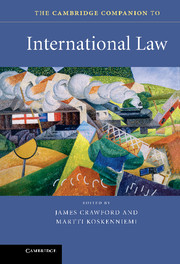Book contents
- Frontmatter
- Contents
- Preface
- Notes on contributors
- Introduction
- Part I The contexts of international law
- Part II International law and the state
- Part III Techniques and arenas
- Part IV Projects of international law
- Guide to electronic sources of international law
- International law chronology
- Select guide to further reading
- Index
- References
Guide to electronic sources of international law
Published online by Cambridge University Press: 05 July 2015
- Frontmatter
- Contents
- Preface
- Notes on contributors
- Introduction
- Part I The contexts of international law
- Part II International law and the state
- Part III Techniques and arenas
- Part IV Projects of international law
- Guide to electronic sources of international law
- International law chronology
- Select guide to further reading
- Index
- References
Summary
Introduction
Several fundamental problems confront those seeking to find the sources of international law. First and foremost, at the conceptual level, there is no constitutional ‘machinery for the creation of rules of international law’ so that the notion of ‘formal sources’ is misleading (Brownlie 2008, 3). Additionally there is the phenomenon of ‘fragmentation’ of international law (see, e.g., Koskenniemi 2007; Shaw 2008, 65). What we can search for is evidence of ‘general consent of states [that] creates rules of general application’; sources that may provide such evidence are, for example, decisions of the International Court of Justice (ICJ), United Nations General Assembly resolutions and various ‘law-making’ multilateral treaties (Brownlie 2008, 3–4). But these ‘sources and evidences’ are extensive, diffuse and decentralised. Even locating them is a challenge.
Although there is still no substitute for a fully equipped law library, this vast range of potentially relevant materials is increasingly accessible on the internet. This account of electronic sources conforms to the categories of article 38(1) of the ICJ’s Statute (see Charlesworth, Chapter 8), but adds some additional materials, not specifically identified in the Statute. These are: Section 5 which deals with ‘Other Sources’, such as UN Resolutions and ‘soft law’; and Section 6, listing ‘Guides, Encyclopaedias and Digests’ which are useful as starting points for searches on particular problems or topics.
- Type
- Chapter
- Information
- The Cambridge Companion to International Law , pp. 421 - 437Publisher: Cambridge University PressPrint publication year: 2012



